October and November were all about the wedding–preparing, traveling, participating, writing, and thanking people. After the wedding ceremony and reception, as we were cleaning up, we noticed a praying mantis on a post by the stairs. What a peculiar little creature! They have two large compound eyes and three simple eyes between them and can turn their heads 180 degrees–the only insect with that ability. They have quick reflexes, and their front ‘praying’ legs have spikes to hold their prey while they eat. Mantis is from the Greek word meaning prophet–a good sign from Nature to bless the newlyweds!
Another amazing creation of Nature is a nondescript deciduous shrub that began to bloom the second week of November! Witch Hazel or Hamamelis virginiana is a shrub or small tree that produces yellow flowers and whose bark and leaves are used to produce the astringent witch hazel. (Hamamelis means ‘together with fruit’–it blooms with the maturing fruit from the previous year)
Most of my gleanings this time comes from the Andersen homestead shelterbelt. A shelterbelt is a line of one or more rows of trees and/or shrubs planted as a windbreak to protect farmsteads and fields from blowing winds and erosion. President Franklin D. Roosevelt initiated the Great Plains Shelterbelt Project in 1934 in response to the severe dust storms of the Dust Bowl years. Shelterbelts save energy for the farmstead, help prevent soil erosion, provide wildlife habitat, and protect livestock and buildings from wind and snow.
This shelterbelt was planted by the Conservation District in 1979 when we built our house on eighty acres we bought from my Grandpa. I spent a few summers weeding those seedlings, trying to keep the scourge of leafy spurge at bay, which could easily engulf the whole planting. As the trees grew, our little homestead grew. We built a barn, put up a corral, set posts, and strung barbed wire. We raised a small herd of Herefords and had a few head of horses. Soon I married and moved to Missouri, and the Past began accumulating at the end of the shelterbelt. My parents divorced, my Dad moved away, and my Mom continued to raise the white-faced calves for a number of years. But now the feed bunk resides in the tall grass.
The old manure spreader and elevator collect fall leaves, winter snow, and spring rains.
Neatly rolled barbed wire and a stack of posts punctuate the end of the rows of trees.
The corn sheller and disc have morphed into farm sculptures.
I would guess that most farmsteads have some old machinery tucked into the shelterbelt. Most of these were hand-me-downs from my Grandpa or bought on his farm sale, including the Farmall M tractor that still scoops snow, so they are much older than our newish homestead. I know my Dad would say he could get the old things working again with his mechanic skills and some ‘persuasion.’ I would also venture to guess that most of us have a box or two in a closet or attic that hold the old things from our past.
Gleanings are ‘useful remnants of a crop that can be gathered from the field after harvesting.’ Perhaps our shelterbelt sculptures and boxes of memories are the useful remnants of the crops of our lives after we have lived that particular time. Maybe we are ‘Hamamelis’–we bloom (again) at the same time we reap the fruits from the past. In other words, we can return to the past as we gaze upon an old feed bunk or hold a small gift made by our child and lovingly given to us for a Christmas present, and we can learn (or remember) something new about them and about ourselves. My Dad can no longer fix machinery or stretch a fence or tamp in a post, but as he sits now in infirmary, I can turn my head to the past and ‘see’ him doing those things. And then I pray–with thankfulness for the past and all we have done together, with gratefulness for the present–even if it isn’t the way I would like it to be, and with hope for the future–that our gleanings will bless us and keep us in love and peace–amen.
Praying mantis photo by LAn
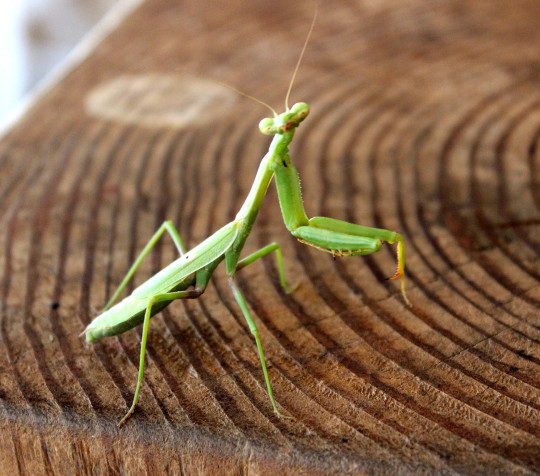
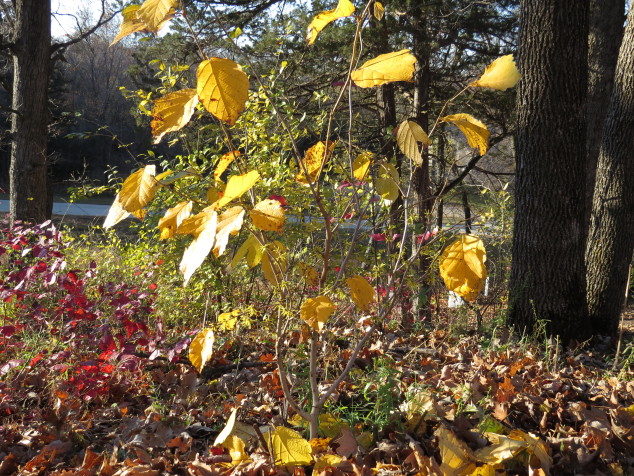
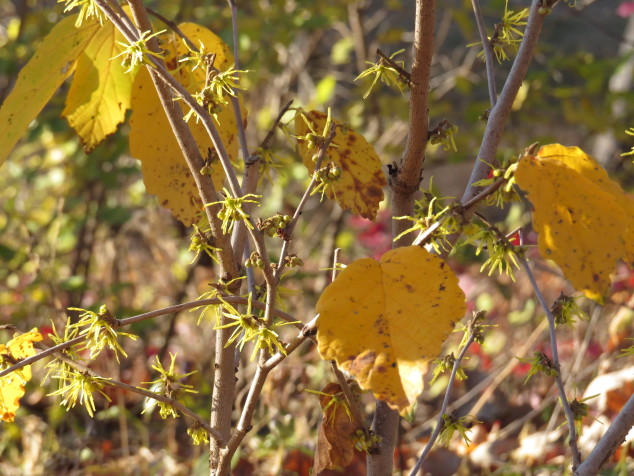
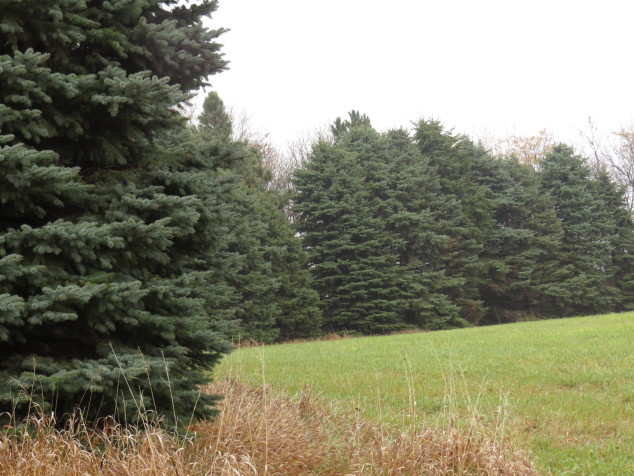
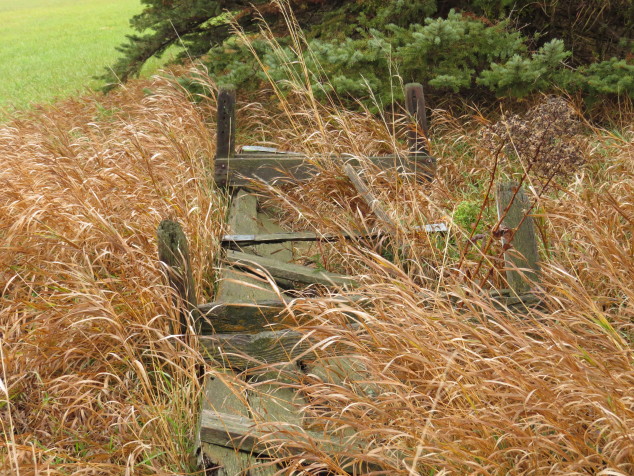
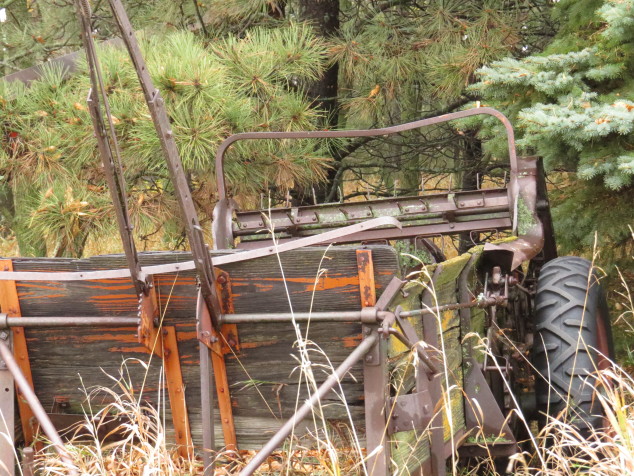
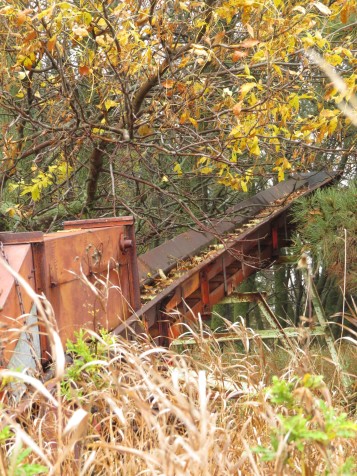
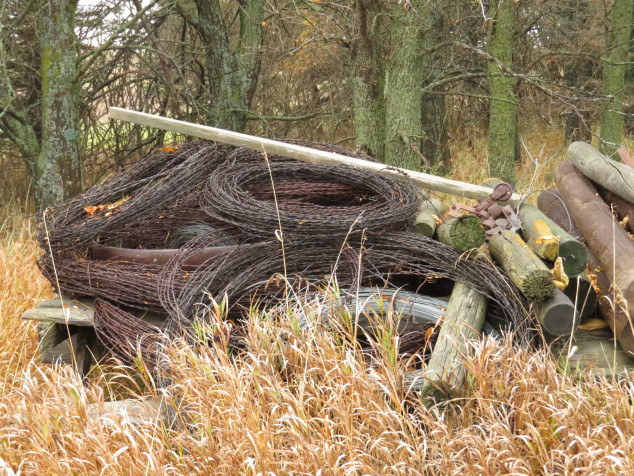
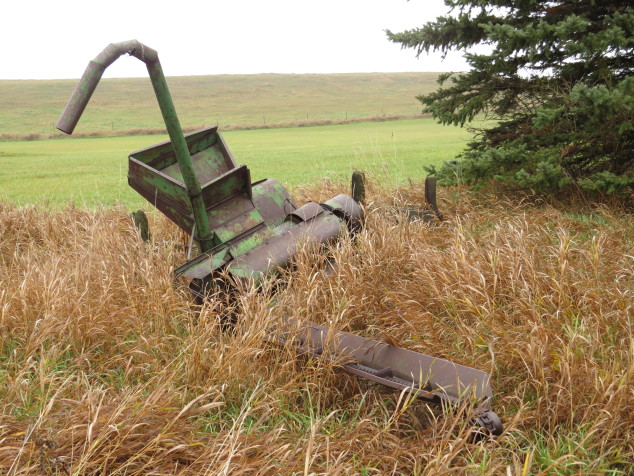
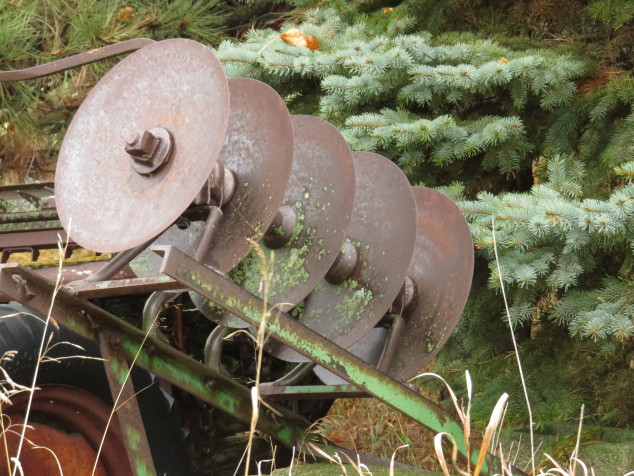
I continue to be amazed at the beauty of the photos you post, the descriptive words you use to tell us about them, and the lessons you teach about Life itself and our responses to it. Thank you!
Pat, thanks so much for your kind and supportive words!